skip to main |
skip to sidebar
It's been years since I first saw this recipe on Bee & Jai's amazing food blog, Jugalbandi, and every so often since then I've thought to myself "I really should try making those peanuts" but never got around to it.
Finally, last week I broke through the "must make it" barrier to burst triumphantly into the "WILL make it today" arena... only to find that I was out of raw peanuts. Cue frantic trips to Tesco, Sainsbury's and Morrisons on a desperate hunt for peanuts - whole, skinned, broken, unskinned, whatever I could get - but all I found were monkey nuts or the ready-to-eat salted/roasted kind.
You can have no idea just how thwarted I felt, because I'm certain that most of you wonderful people are the kind that don't thwart easily (especially if you live close to any ethnic food-stores). But me, I had to go back home empty-handed and log on to an Internet site that sells all manner of ethnic goodies... and peanuts. Raw, whole, broken, unskinned, pink, red, jumbo - pretty much every kind of peanut I could think of.
Reader, I bought them.
For my first batch of these addictively good masala peanuts, I changed the quantity of the spices used, not the spices themselves, and added fresh curry leaves. But the procedure was otherwise exactly as set out by Bee and Jai. (I made another batch for Pete with no chilli powder at all, and he scarfed the peanuts down like they'd been made for him. Oh. Wait...)
A note of warning - I used an enamelled metal tray to bake these peanuts, and I must say that it took some serious elbow grease to get it cleaned of the rock-hard baked-on chickpea flour mixture. Did I mind the effort? Not in the least - all I had to do was think of the container of uber crunchy spicy peanuts, and the hard work was totally worth it. Just - whatever you do, don't use a non-stick tray. You have been warned.
Recipe for: Baked masala peanuts
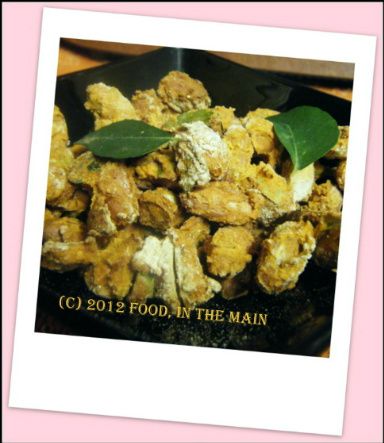
Ingredients:
1.5 cups raw peanuts (skinned or unskinned)
1.5 cups chickpea flour (kadala maavu/besan)
2 htsp red chilli powder (or to taste)
1/2 tsp ground ajwain (bishop’s weed)
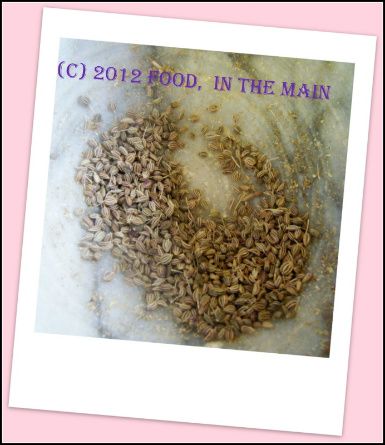 1 tbsp dried fenugreek leaves (kasoori methi)
1.5 tbsp rice flour
Handful of fresh curry leaves, roughly torn up
Salt to taste
Water as required
1 tbsp dried fenugreek leaves (kasoori methi)
1.5 tbsp rice flour
Handful of fresh curry leaves, roughly torn up
Salt to taste
Water as required
Method:
1. Mix together the chickpea flour, red chilli powder, ground ajwain, fenugreek leaves, curry leaves, rice flour and salt to taste.
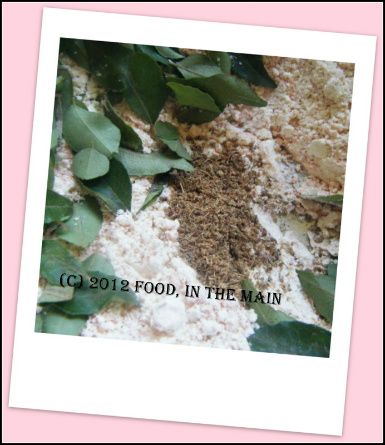 2. Take half the spiced flour in a bowl and carefully add just enough water
2. Take half the spiced flour in a bowl and carefully add just enough water
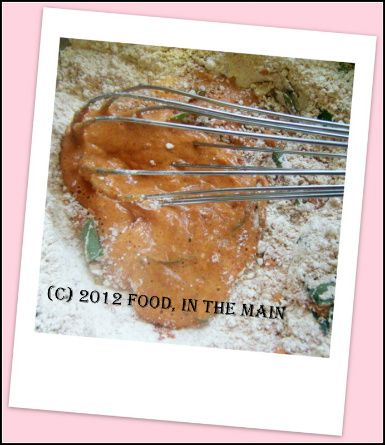 to make a thick paste that drips slowly off a spoon.
to make a thick paste that drips slowly off a spoon.
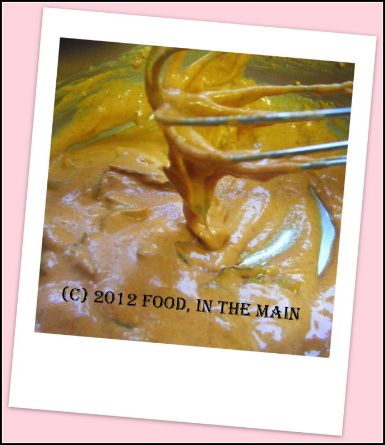 3. Add the peanuts to this and mix well.
3. Add the peanuts to this and mix well.
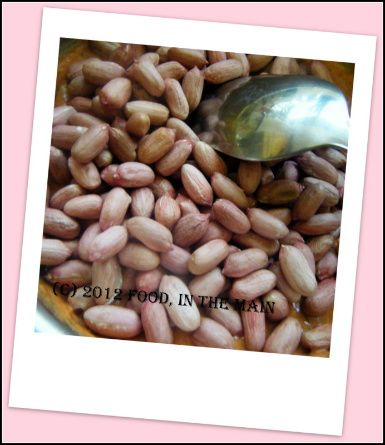 4. Now add the remaining spiced flour and mix it gently. Be warned, this is an exasperatingly sticky job.
4. Now add the remaining spiced flour and mix it gently. Be warned, this is an exasperatingly sticky job.
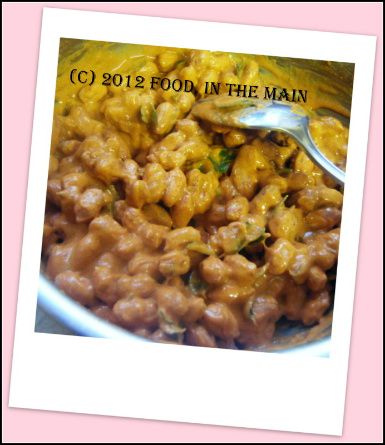 5. Spread the peanuts onto a metal baking tray. (See warning above of exasperating stickiness. Persevere.)
5. Spread the peanuts onto a metal baking tray. (See warning above of exasperating stickiness. Persevere.)
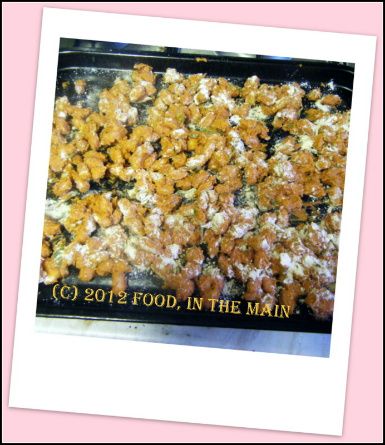 6. Bake at 180C/350F for 15 minutes, then stir the peanuts around, using a metal spatula to scrape and loosen the worst bits.
6. Bake at 180C/350F for 15 minutes, then stir the peanuts around, using a metal spatula to scrape and loosen the worst bits.
 7. Bake for another 8-10 minutes, until the peanuts turn a darker colour in spots. They will crisp up as they cool down.
7. Bake for another 8-10 minutes, until the peanuts turn a darker colour in spots. They will crisp up as they cool down.
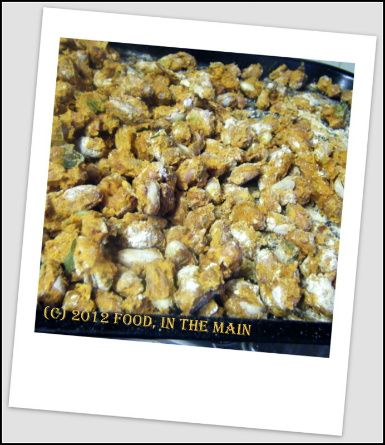 Stir them around once or twice as they cool.
Stir them around once or twice as they cool.
 Store in an airtight container.
Store in an airtight container.
RECIPE: BAKED MASALA PEANUTS
Ingredients:
1.5 cups raw peanuts (skinned or unskinned)
1.5 cups chickpea flour (kadala mavu/besan)
2 htsp red chilli powder (or to taste)
1/2 tsp ground ajwain (bishop’s weed)
1 tbsp dried fenugreek leaves (kasoori methi)
1.5 tbsp rice flour
Handful of fresh curry leaves, roughly torn up
Salt to taste
Water as required
Method:
1. Mix together the chickpea flour, red chilli powder, ground ajwain, fenugreek leaves, curry leaves, rice flour and salt to taste.
2. Take half the spiced flour in a bowl and add enough water to make a thick paste that drips slowly off a spoon.
3. Add the peanuts to this and mix well.
4. Now add the remaining spiced flour and mix it gently. Be warned, this is an exasperatingly sticky job.
5. Spread the peanuts onto a metal baking tray. (See warning above of exasperating stickiness. Persevere.)
6. Bake at 180C/350F for 15 minutes, then stir the peanuts around, using a metal spatula to scrape and loosen the worst bits.
7. Bake for another 8-10 minutes, until the peanuts turn a darker colour in spots. They will crisp up as they cool down. Stir them around once or twice as they cool. Store in an airtight container.
Hyderabadi mirchi ka saalan is a recipe that I’ve wanted to try, but for one reason or another never got around to making. I’ve never had it anywhere before either. (And on an aside, the next time I’m in Hyderabad, I’m so going to collar a native Hyderabadi and go on a gastronomic tour of the best that this city has to offer. I do understand that it won’t be THE BEST - because I’d really rather not eat non-vegetarian food - and I understand that THE BEST biriyani is definitely not vegetarian. Oh well. I’m sure I’ll be happy with the saalan and other such recipes.)
Anyway, I came across a recipe in Bong Mom’s Cookbook for something approaching saalan without using coconut, and felt very thrilled because I had some jalapeno chillies, once green but now rapidly becoming orange and red - to use up.
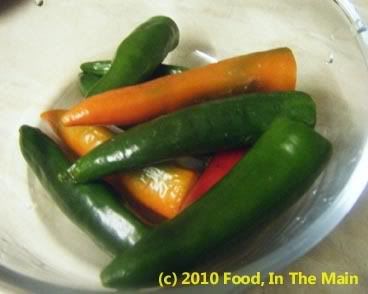
The recipe also said to roast the chillies in the oven (which is another thing I’d been meaning to try, and now I have). Of course, I didn’t really notice that Bong Mom’s roasted chillies in her photo were only very mildly brown after 40 minutes. No, all I registered was that the recipe mentioned “30-40 minutes roasting”, and so, blithely blind to any note of caution (such as “these are my toaster oven settings”), I set off to roast the chillies in my regular, fan-driven, electric oven at a blistering 190C.
Boy, was it ever blistering! It very nearly blistered my poor jalapenos to charcoal. Only a serendipitous check at 20-odd minutes saved the chillies from a horrendous death by burning. Perhaps because the chillies had been over-roasted, they felt very insubstantial when I took ‘em off the tray – quite limp to the touch, really, and I wondered if I’d entirely burnt the taste and heat from them as well. (No, I hadn’t, thankfully, as I discovered later. I also discovered that the ideal size – for serving and eating purposes - would have been about 1.5”-2” long, rather than 4” or thereabouts.)
Apart from that, though, the recipe went swimmingly well. I used light soy milk in place of regular milk, and I don’t think it made much difference to the final result... although after I’d poured it in and smelt the milk’s sweetish aroma, I had a few moments of doubt. I needn’t have worried – you couldn’t have said that the dish contained soy milk, once it was finished.
MAN was the curry tasty, though! I had it with plain basmati rice and some sautéed roasted chickpeas. The mild sauce was the perfect foil for the heat from the chillies - but if I was making this dish using bell peppers, I would definitely up the heat quotient for the sauce. It would be too boring for me otherwise... although perhaps chilli-intolerant people would disagree.
Recipe for: Roasted jalapeno curry
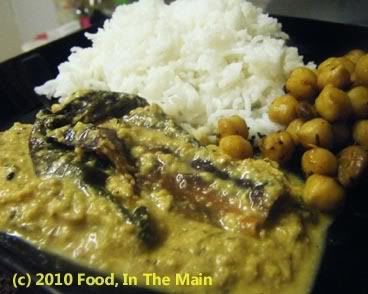
Ingredients:
10 jalapeno peppers (or bell peppers or long "bajji" chillies, cut into 2.5" pieces)
10 almonds (with or without skin, soaked in water for 30 min)
1 medium onion, sliced
2 cloves garlic
1" piece ginger, grated
1 medium tomato, cut into small chunks
1 cup light soya milk (or use regular milk)
1/2 tsp nigella seeds
1 tsp cumin seeds
3 tsp oil
1 tbsp kasoori methi
1/4 tsp turmeric
1/2 tsp sweet paprika Salt to taste
Chopped coriander for garnish
Method:
1. Toss the chillies with 1 tsp oil, salt and pepper and roast in the oven for 20 minutes or so at 180C/350F.
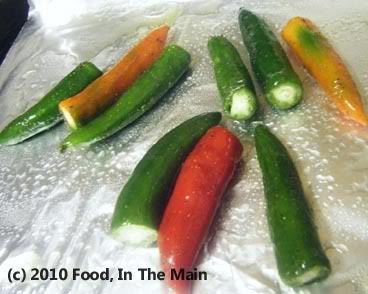
They should have brown spots here and there. (Try not to burn them, which I nearly did.)

2. While the chillies are roasting, put the almonds in hot water and let soak for 30 minutes or so. Reserve.
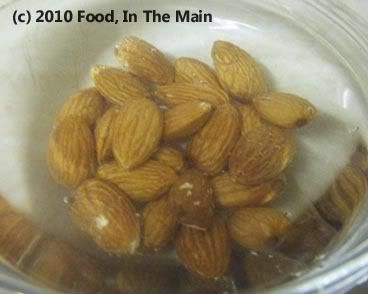
3. Heat 1 tsp oil in a pan and add the onions, garlic and ginger.
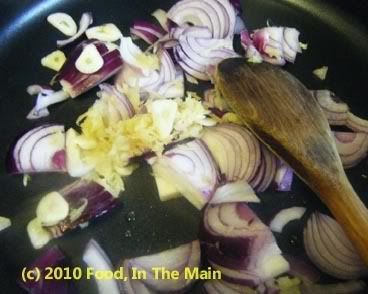
4. When the onions begin to soften, toss in the chopped tomatoes.
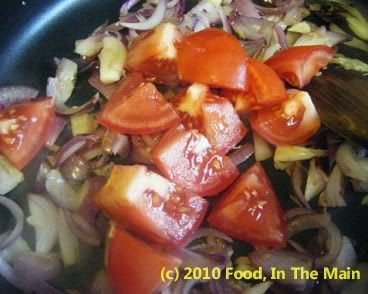
5. Fry for 3-4 minutes till the tomatoes turn soft, then turn off the heat and let the mixture cool.
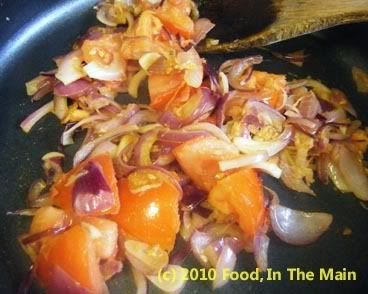
6. Grind the cooled tomato-onion masala along with the almonds (you can remove the skin if you like, but I didn't)
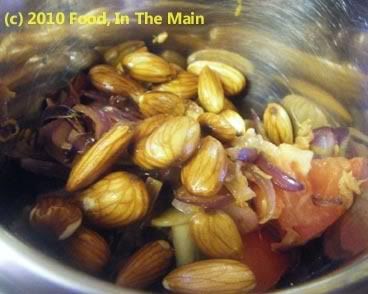
to a fairly smooth paste. Mine is pinkish, probably because of the red onion I used, as well as the almond skins.
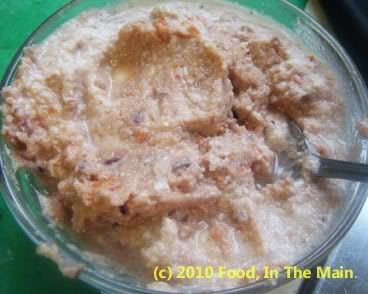
7. In a pan, heat the remaining oil, then add the cumin and nigella seeds.
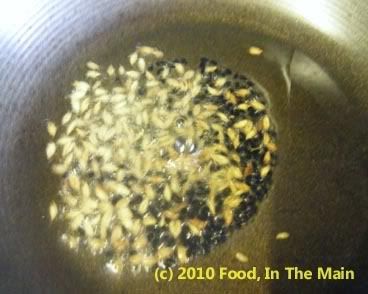
8. Let the seeds fry for 30 seconds, then add the ground paste and mix in well.
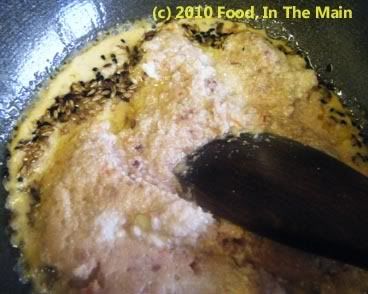
9. Add the paprika (if using), turmeric powder and kasoori methi.
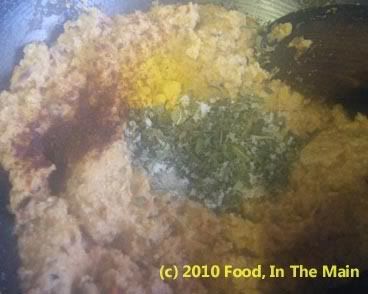
10. Pour in the soya milk, add salt to taste, and stir till the mixture is homogenised.
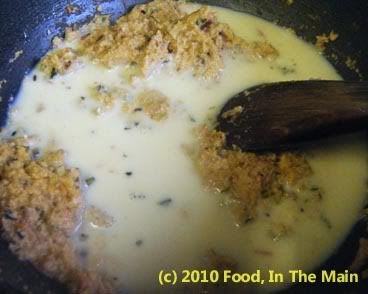
11. Let the sauce come to a gentle boil on medium heat (about 4 minutes), then add the roasted chillies.
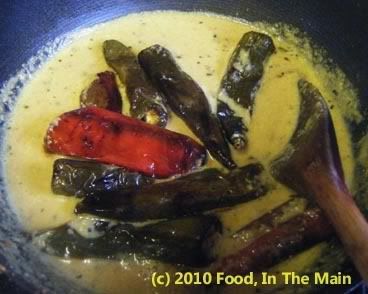
12. Stir it all gently, let it simmer for 3-4 minutes, then add the chopped coriander. Serve hot with plain basmati rice, jeera rice, ghee rice or any mild pulao. Also good with chapaties.
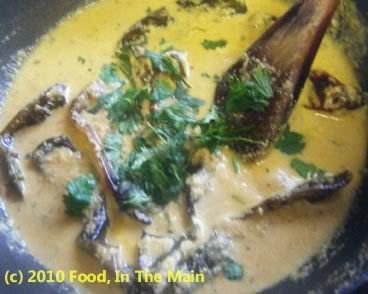
I've always thought that puris referred to only one thing - small, airy, puffed up fry-breads made with plain or wholewheat flour. When I came across a recipe for "besan ki puri" on The Veggie Hut, I fully expected it to be a deep-fried recipe, differing from a regular "atte ki puri" (wheatflour puris) by the addition of besan or chickpea/gram flour. I was quite surprised to find that these besan ki puri were merely shallow-fried, and they looked like regular chapaties or parathas. So perhaps besan ki puri is a regional or colloquial name for this type of stuffed paratha/chapati, although I'm not sure where this recipe originated or which State it's from.
The recipe was interesting, though - I'd never come across a seasoned chickpea flour filling for chapaties, nor even heard of such. The filling was simple enough to make, and certainly I found it a lot easier to handle while rolling out the chapaties. (Wetter fillings have been known to squirt out annoyingly no matter how gently I wielded the belan (rolling pin).)
Until now I've only had the western-type pastry rolling pin, very large and very heavy and the same width from end to end, compared to the Indian ones which are far lighter and tapered towards the ends. I've recently acquired one of the latter kind, so yaaay! I'll have to see if they make a difference while rolling out chapaties. It could well be that my faulty technique, and not the rolling pin, is the factor that brings the filling leaping so joyfully and messily out of the chapati dough...
Anyway, what I discovered while rolling out these chickpea-flour-filled chapaties is that I got a few air pockets at the start... but some light pressure while rolling them out ensured that the air leaked away gently instead of literally tearing its way out of the dough. That's my kitchen tip for the day.
PS. The term "kitchen tip" does NOT imply that my kitchen is a rubbish area. Just so you're aware.
Recipe for: Chapaties with gram flour filling
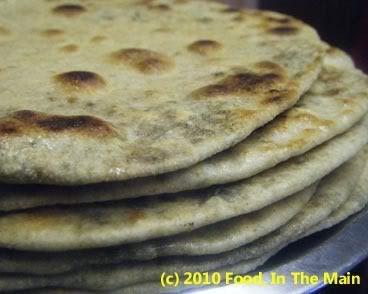
Ingredients:
3 cups wheat flour
Salt to taste
water as required
For the filling:
1 cup chickpea/gram flour
5-6 green chillies, chopped finely
1 tbsp coriander powder
1/2 tsp cumin powder
2 tbsp dried fenugreek leaves (kasoori methi)
1 tsp red chilli powder
3-4 tbsp water 1 tbsp oil
Salt to taste
Pam or other non-stick spray (or oil for cooking)
Method:
1. Put the flour into a deep mixing bowl, add a little salt and knead to a smooth pliable dough using as much water as required. Cover the dough and let it rest for 15-20 minutes. 2. Heat the oil in a frying pan and add the green chillies, coriander powder, cumin powder and kasoori methi.

3. Stir-fry them for 30 seconds on high heat.
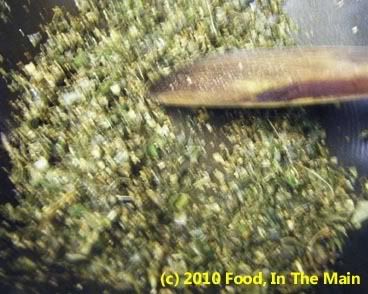 4. Add the besan (gramflour/chickpea flour), stir till the ingredients are well mixed.
4. Add the besan (gramflour/chickpea flour), stir till the ingredients are well mixed. 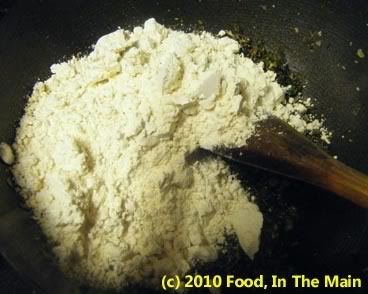
5. Continue stir-frying on medium heat, till the flour turns a darker shade and emits a roasted aroma. Be careful not to burn the flour. 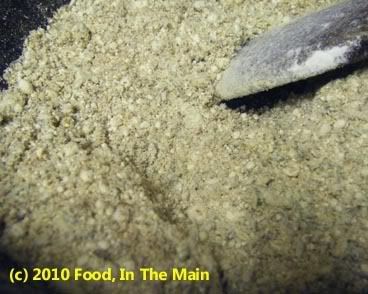
6. Add the turmeric powder, red chilli powder and salt to taste, and mix well. 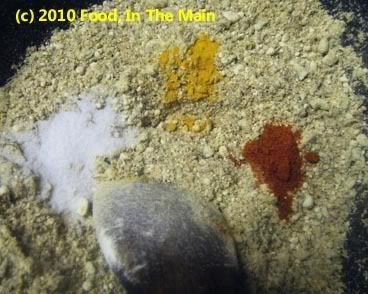
7. Now add water, tbsp by tbsp, stirring between each addition, 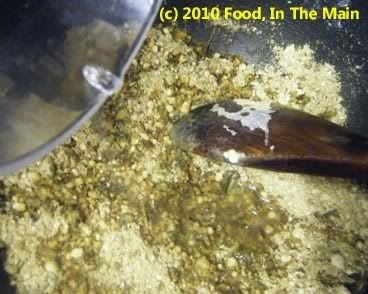 until the roasted flour begins to come together in clumps.
until the roasted flour begins to come together in clumps.  Only add enough water to lightly moisten all the flour, but it's better to stop while the flour is still a bit dry than to add too much and make it sticky wet. If that happens, the best thing to do is start over. Let the filling cool completely once it has become moist.
Only add enough water to lightly moisten all the flour, but it's better to stop while the flour is still a bit dry than to add too much and make it sticky wet. If that happens, the best thing to do is start over. Let the filling cool completely once it has become moist.
8. To make the chapaties, pinch off a ping-pong ball sized piece of dough. Flatten it in a saucer of dry flour, shake off the excess flour, then roll the dough out into a 4" circle. Place 2 tbsp of the filling in the centre. 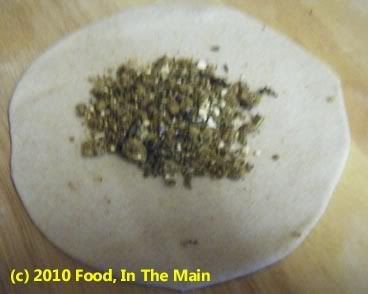
Bring the edges of the chapati together to enclose the filling completely. 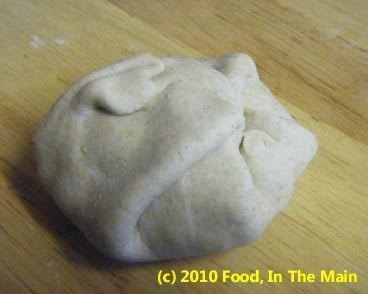
Turn it over so that it lies seam-side down, then start rolling it out again. If any air pockets are visible (the puffed up area), continue rolling but do it more gently, so as to get rid of the air. 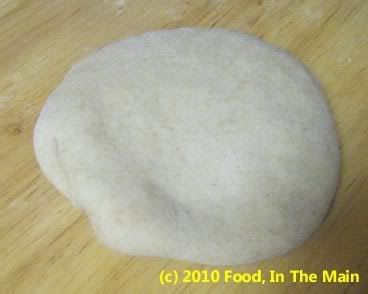
Continue rolling out the chapati till it is evenly thin all over. 
9. Heat a tava or frying pan on medium heat, then place a chapati on the tava for 10-15 seconds, or till small brown spots appear. 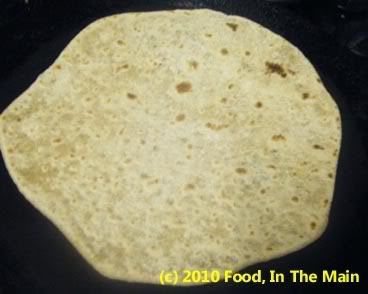
Turn it over and spray the partially cooked side with Pam, then flip it over again to spray that side as well. 10. Cook on medium heat for about 2 minutes for each side, pressing down with a spatula to let the chapati cook evenly all over. Keep the cooked chapaties covered and warm in a clean cloth-lined plate while you make the rest of the chapaties the same way. They can be cooked till very crisp (which will take longer), almost like a cracker, if you like. 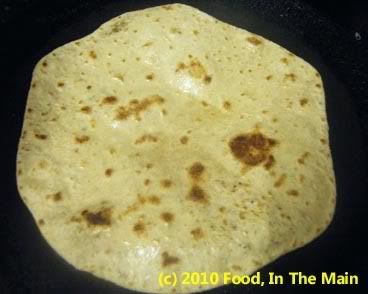
11. Serve hot with a curry, or with pickles and yogurt.
It’s always the same – when I read about something new (and vegetarian) that I haven’t seen or tried eating/cooking before, I simply HAVE to source some of it for myself. Now, things like edamame-in-the-pod and green chickpeas and other such exotic things aren’t found easily in the UK – or at all, actually. Heck, you cant even get frozen okra. Not even in the frozen section of the supermarket… that is to say, the section in the supermarkets where you find the frozen items (just to clarify).
(Not that I’d buy frozen okra… I just have the feeling that it would be awash in slime once it thawed out. It probably wouldn’t, but you know what those mental images of things you have never seen are like – they persist in your head beyond reasonable argument!)
Anyway, when I discovered that my favourite online Indian greengrocer was selling canned tuvar lilva, I immediately ordered a can to see what tuvar lilva was like, to try it out. Yeah, it’s not the same as fresh, but it’s better than nothing. And don’t try to convince me otherwise because I don’t want to know!
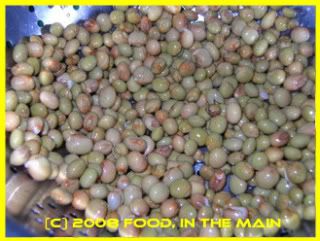
Of course, true to form, once I had that can in my pantry, I let alone for a few months, occasionally looking in on it in a slightly gloating fashion (“I’ve got tuvar lilva too”) but eventually letting it remain on the shelf. Well, it’s got to get accustomed to its new surroundings, right?
Yesterday, however, the time came for me to open my precious can of tuvar lilva (yes, of course I checked with a couple of astrologers for the most auspicious time for the grand opening), in response to a request from my mother to “make something different”) for dinner.
So, with much fanfare and to the booms of a 21-gun salute, I applied the can opener to the can – and slowly the contents came into view... roundish, greenish, beanish tuvar lilva. I thought they looked remarkably like the gungo peas with which I’d experimented earlier. In any case, they tasted quite nice... although I cant help wondering what they’re like fresh. I guess I should be pleased that I could at least get the canned version – like I said, better than nothing – but it’s in the nature of things for human beings to want that which is not available… and say what you will, I AM human.
And after all that, on to the recipe!
Recipe for: Tuvar lilva dal

Ingredients:
1 generous cup canned cooked tuvar lilva
3 medium onions, sliced
3 tomatoes – 2 quartered, 1 chopped fine
10 small baby potatoes, halved (or quartered, depending on size)
4 green chillies, chopped fine
1 tsp grated ginger
½ tsp cumin powder
1 tsp cumin seeds
1 black cardamom
½” stick cinnamon
½ tsp coriander powder
¾ tsp garam masala
1 tbsp kasoori methi
1 tsp cornflour
1 tbsp oil
Salt to taste
Water as required
Method:
1. Boil the sliced onions in 1 cup of water, covered, for 10 minutes or until the onions are soft and cooked.
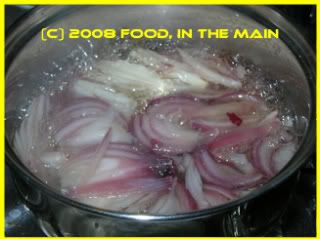
Drain the cooking water and reserve. Let the onions cool.
2. Grind the cooked onions with the two quartered tomatoes (adding ¼ cup water if required) into a smooth paste. Reserve.
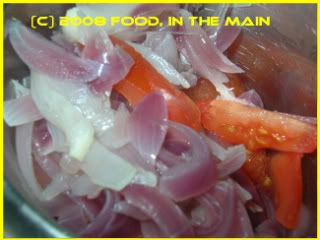
3. Heat oil in a pan, add cumin seeds & cumin powder, green chillies and ginger.
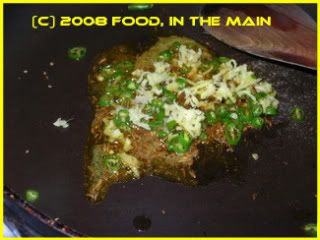
Fry for 1 minute. Then add the cinnamon stick, black cardamom, garam masala, kasoori methi and coriander powder. Stir well and continue to fry for another minute.
4. Then add the chopped tomato and the potatoes, stir it all about till well coated with the oil and spices.
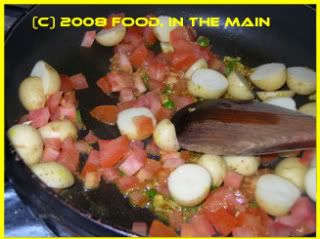
Then pour in the reserved onion water and add the kasoori methi. Stir well and cook on high heat till the water has nearly evaporated.
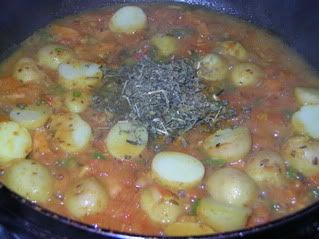
5. Now pour in the ground onion-tomato mixture along with 250 ml (1 cup) water.
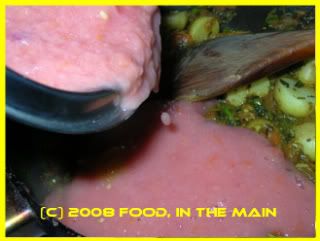
Mix well and bring it to a bubbling boil.
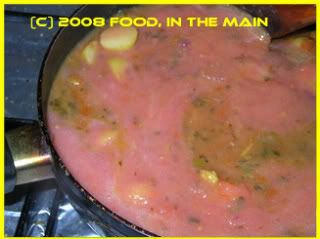
Then turn down the heat to a simmer and let it cook for 10-15 minutes or till the potatoes are done.
6. Add salt to taste along with the cooked lilva tuvar. Turn the heat up again and let the dal bubble for another 5-6 minutes, until any excess water evaporates and the dal thickens.
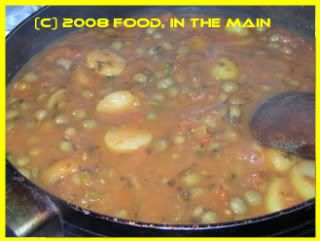
If it doesn’t get a thick consistency, spoon out some of the watery parts, whisk in the cornflour and stir it back into the dal. Let it boil for a couple of minutes till the dal comes together.
7. Finally garnish with chopped coriander and serve hot over plain rice, or with chapaties.





















































